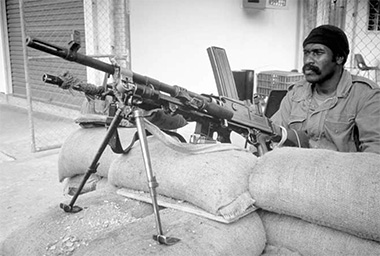
'The original [Panguna mine] agreement overrode our customs, denied us our land rights and was too rushed. It contradicts our way of life; what comes from the land should benefit the landowners … nobody else. ’ - A Nasioi militant landowner
APART from convoys with soldiers riding shotgun and yellow ochre Bougainville Copper Limited trucks packed with security forces sporting M16s, you would hardly guess that a guerrilla war was in progress near the Bougainville provincial capital of Arawa. But once you reached the sandbagged machinegun nest in Birempa village at the foot of the rugged mountain jungles of the Crown Prince Range, the tension started to rise. Scanning the dense vegetation for a sign of the militants of the Bougainville Republican Army (BRA)—known as Rambos in the first year of the decade-long civil war – the Papua New Guinea Defence Force soldier manning the machinegun didn’t notice the irony of the T-shirt he was wearing.
Chapter 16 of Don't Spoil My Beautiful Face: Media, Mayhem and Human Rights in the Pacific, by David Robie (2014). ISBN 9781877484254
Robie, D. (2014).Bougainville: The valley of the Rambos, 1989. In Robie, D., Don't Spoil My Beautiful Face: Media, Mayhem and Human Rights in the Pacific. ISBN 9781877484254. Available at Academia.edu.


